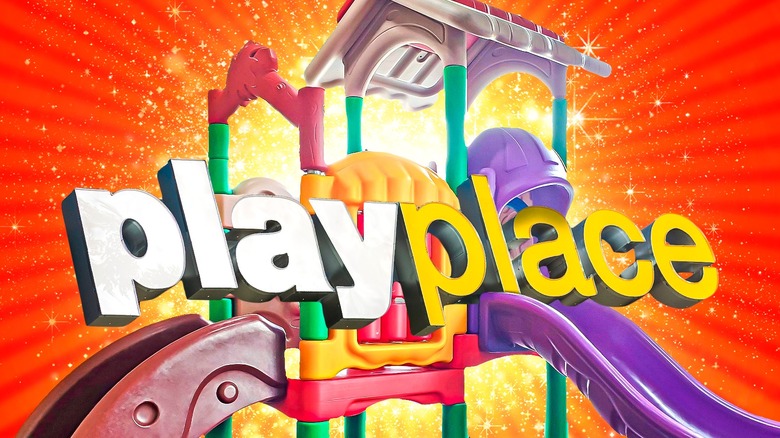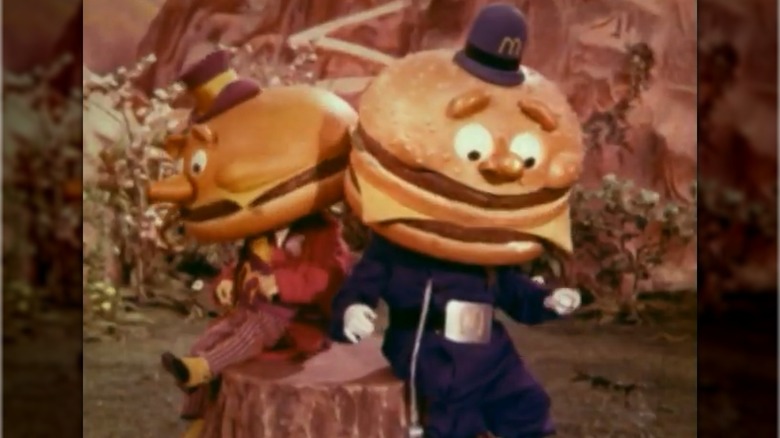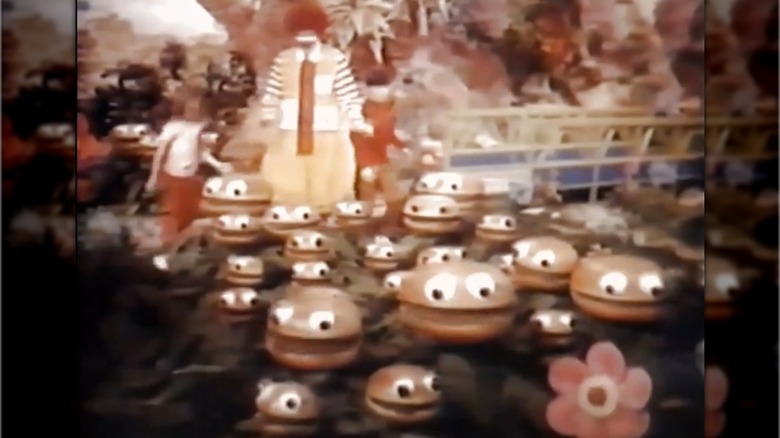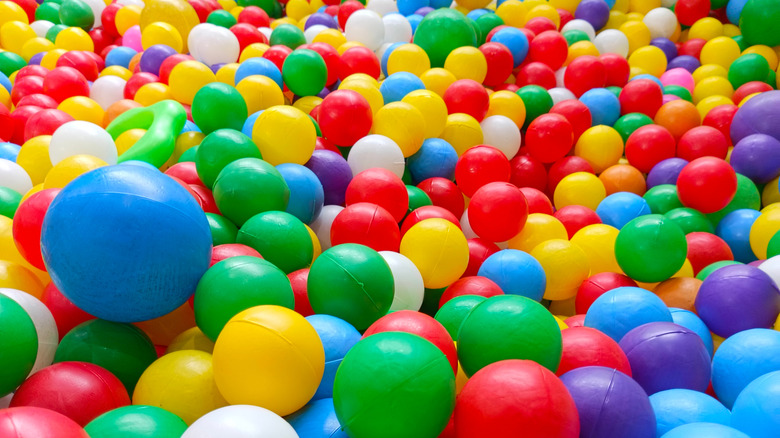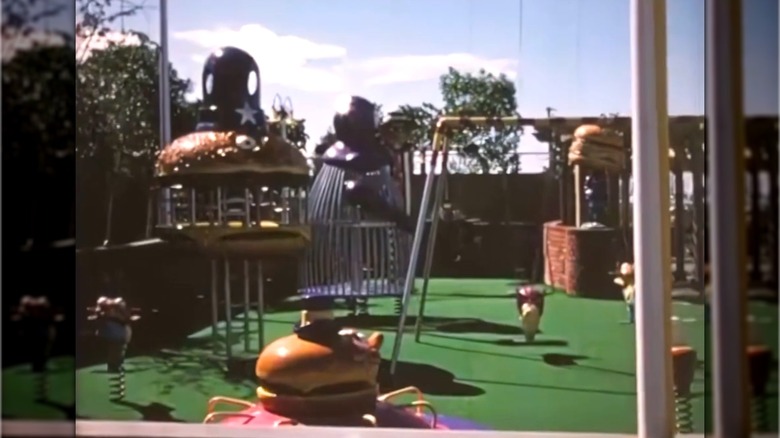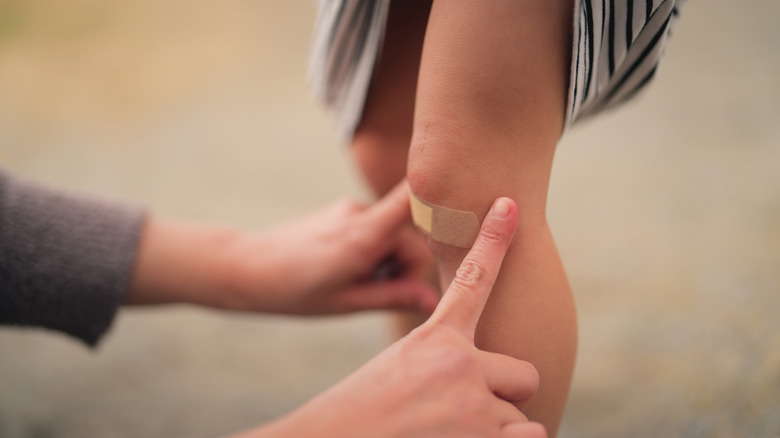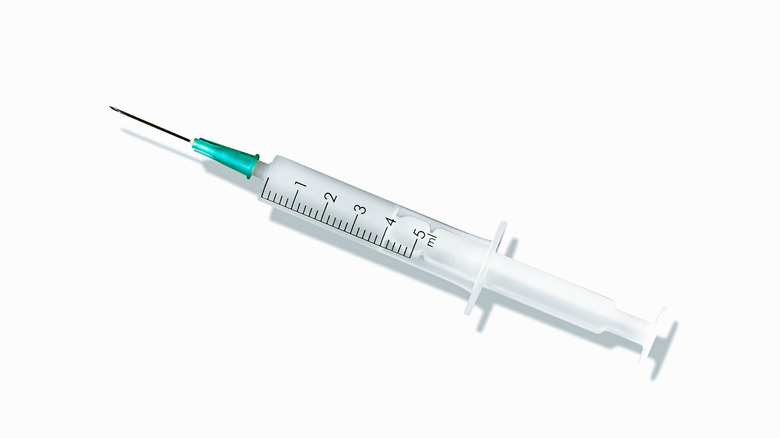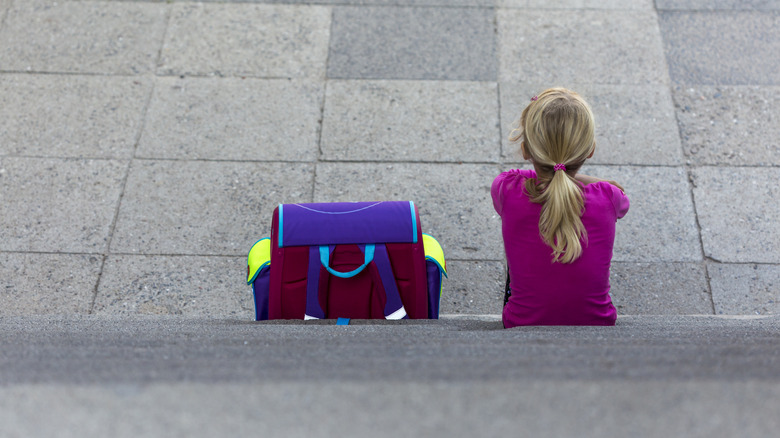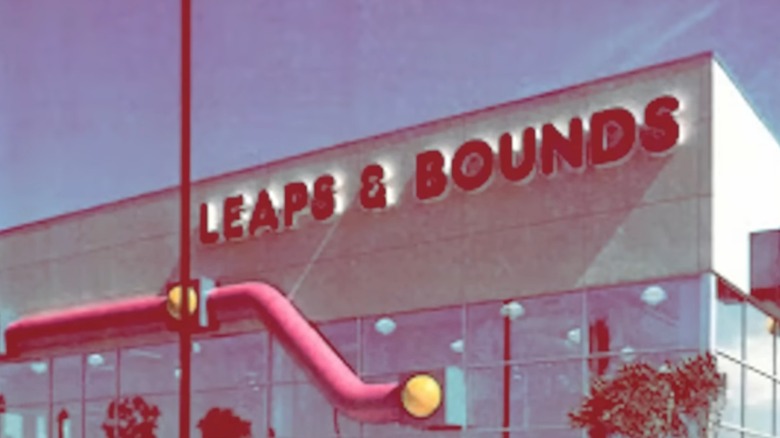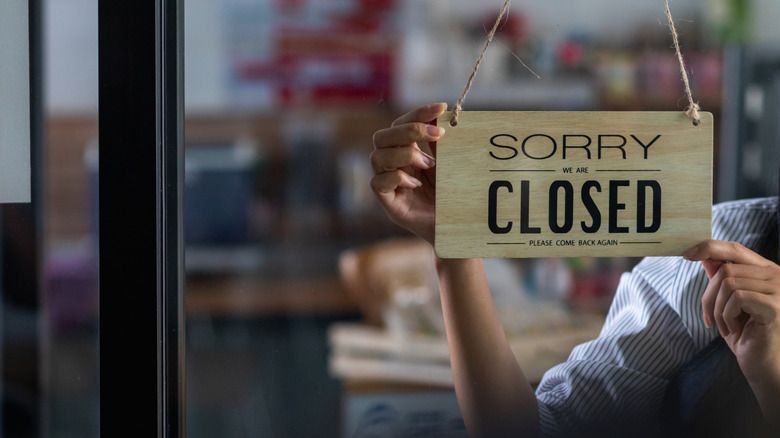10 Facts You Didn't Know About McDonald's PlayPlaces
McDonald's has long been a place where kids could go to both eat and play, but in the past few years, playing hasn't been much of an option. The number of locations that have a PlayPlace, that indoor playground that so many remember from their childhoods, has slowly declined over the past few years. A number of reasons are responsible for this, but while those reasons might have affected the physical locations, they can't change the memories many people have of diving into a ball pit in the 1990s or climbing up a metal slide in the 1970s.
The PlayPlace had a very practical start — McDonald's wanted to increase food sales, and in the 1970s and 1980s, drawing in more kids was the key. The result was a chain of playgrounds that let kids entertain themselves while parents got a bit of a break. Despite some unfortunate events in the life span of the PlayPlace, it was somewhere kids really liked to be. Here are 10 facts you didn't know about McDonald's PlayPlaces.
The very first McDonald's playground opened before the company asked for an official design
The first recorded playground at a McDonald's didn't begin as an official, company-wide playground design. However, it apparently had the company's approval. When the new McDonald's near Eastwood Mall in Birmingham, Alabama, opened up in 1971, it included an outdoor playground linked to the restaurant by an outdoor bridge with the name of "Bridge Over the River Fry." A local kiddie-show host was there for the inaugural weekend, and at some point, Ray Kroc himself showed up. (Sources differ on whether he was there in July or August of 1971.)
Why that one franchisee decided to add a playground is lost to time; it's unknown if the company was already testing the playground waters or if the franchise owner just had a great idea. However, the design incorporated characters from McDonald's McDonaldland marketing campaign, and there was someone dressed as Ronald McDonald to welcome the kids and take photos for that weekend. It's reasonable to guess that McDonald's wouldn't have taken copyright infringement lightly, and Kroc likely wouldn't have been a happy guest had the playground not been officially approved.
The whole thing was just an extension of the company's advertising
You may know them as PlayPlaces today, but originally, the playgrounds were named McDonaldland Playland. A prototype (variously called McDonaldland Park or McDonaldland Playground in different sources) debuted at the Illinois State Fair in 1972, and later that year, the first official Playland opened in Chula Vista, California, just south of San Diego.
The Playland was fun for kids, but the whole thing was also great marketing for the restaurant. The design was first made for McDonald's "McDonaldland" commercials, and it was transferred to the play areas so that kids would think they were entering the world they'd seen on TV. That would supposedly make kids want to visit, and those kids would supposedly bring parents, other family members, or neighbors with them. The pitch was that these play areas would then bring in a lot more money for the franchises that installed them — and did they ever.
Every location that added a Playland saw increased sales, and according to a promotional video, the original Chula Vista location saw an increase in sales of 34% — and that was before the park was even finished. Eventually, the completed play area helped that location increase its sales by 63%, which are numbers no franchisee concerned about sales wants to ignore — and they didn't ignore it. So many arranged to have Playlands and PlayPlaces installed that, by 1991, McDonald's operated the largest number of playgrounds in the U.S.
Playland pre-dated the invention of the ball pit
One of the features often associated with PlayPlaces now is the ball pit, that sea of brightly colored plastic balls that kids could jump into without much fear. Ball pits were actually invented after the debut of McDonald's Playland, but the timing was perfect. Ball pits, then called ball crawls, debuted in 1976 at SeaWorld in San Diego and quickly spread to other amusement parks. These were relatively gentle play areas where kids could jump and "swim" without fear of drowning (although being pushed under a thick layer of plastic balls could be uncomfortable).
At the same time, concerns about child abduction and making safer playgrounds led designers to create softer and supposedly less injurious play equipment (More on that in a minute). Less metal and more plastic were the rules of the day. Moving play areas indoors was also seen as a way to increase the safety factor. McDonald's paid attention to these concerns and moved the Playlands indoors, renaming them PlayPlaces in 1987. That was the perfect environment in which to combine the massively popular ball pit with the massively popular McDonald's play areas, and the two have been linked in people's minds ever since.
The first official playground's debut was a durability test
When the Playland first debuted at the Illinois State Fair in August 1972, it was not only a general trial run to see how much kids liked it, but it was also a durability test for the equipment. No restaurant franchisee would want to install equipment that would need repair within a short amount of time, so the company needed to know how well everything would hold up when under siege by eager kids. The pieces and layout had been designed by Setmakers, first for McDonald's commercials, and then for the real-life test in Illinois. Between 350,000 and 500,000 families used the playground equipment at the fair.
The test was a resounding success, according to David Haber, one of the designers. Supposedly, those few days of very heavy use at the fair would predict how the equipment might do over three years of general use at restaurants, and everything went smoothly. The physical equipment was made by a company called Game Time, a major playground-equipment manufacturer.
A lot of kids were injured
Despite the push for safer playground materials and safer equipment, the McDonald's Playlands and PlayPlaces had safety issues. The older metal equipment could become so hot in the sun that children developed second-degree burns, and even when the play areas were converted to mostly plastic and rubber, the complaints continued. Children were playing with items contaminated with bacteria, and a former employee mentioned online that the decline in PlayPlaces may have had to do with all the urine employees kept having to clean up. An examination of fast-food play areas in 2011 found dirty windows, used bandages, hair, and graffiti among the equipment.
McDonald's wasn't exactly open about the problems. In 1995, the U.S. Consumer Product Safety Commission claimed the company hadn't reported injuries from a particular piece of equipment. In 1999, the Commission again accused McDonald's of not reporting over 400 injuries, including broken bones and head injuries. McDonald's was fined $4 million as a result. By the way, that 2011 survey? ABC News reported that the professor who took the samples was banned from eight different McDonald's locations owned by the same person. The owner claimed that her requests to shut down the play areas were "disruptive."
Even clean equipment couldn't prevent what occurred at a location in New Zealand, however. In two separate incidents, children were found in other parts of the restaurant or the parking lot after leaving the play area through a hidden exit without their parents' knowledge.
The heroin death is a hoax, but kids have found needles among the play equipment
For years, there's been an urban legend about a young boy who was stuck by a needle in the ball pit at a McDonald's and died within a day from an accidental heroin overdose. This is a hoax — Snopes investigated and found there was nothing to back up the claim, nor had the story run in a newspaper, as the hoax would have you believe. In fact, the newspaper had printed a denial that it had ever done so.
However, legends often start from a grain of truth. No kids died from hypodermic needles in the ball pit, but there have been several incidents where children either found syringes or were injured by needles in the play area. One 8-year-old in West Virginia found a needle and sustained a minor scrape; luckily, doctors determined that the scrape was only on the surface of the skin and had not broken through. A Canadian mom found her son and his friend playing with a syringe plunger and casing that had dried blood on it. An Australian girl was stuck by a needle in a play area, too.
More than one parent left their child there unsupervised
One of the problems McDonald's locations faced when they opened Playlands and PlayPlaces was that parents would leave their kids at the play area and go off and do something else. For example, one manager told the Grand Rapids Press in 1977 that she kept having to tell parents the location wasn't a daycare center and that they couldn't just leave the kids there. You might think this had to do with kids in the 1970s being more independent, but the problem continues even now. The only difference is that parents face much more than an upset but polite manager.
In 2015, police arrested an Arizona woman who left her child in a McDonald's play area so she could go to a casino. Police charged a Pennsylvania father in 2019 after he left his stepson at a play area while he shopped for an hour. In 2014, there were complaints online about grandparents who'd left their grandchild at a play area for several hours. Keep in mind these were young children ranging in age from 2 to 9 years old — not teens or even younger children accompanied by older teens.
McDonald's opened a separate chain of larger indoor playgrounds after the PlayPlace's success
McDonald's PlayPlaces were popular, but in the early 1990s, another type of indoor play area started gaining steam. These were larger facilities from companies like Discovery Zone or Chuck E. Cheese, which contained similar equipment, such as ball pits, on a larger scale. McDonald's version was called Leaps & Bounds, and by 1994, the chain had 49 locations. It was run by McDonald's but didn't have any visible connection; there were no McDonald's logos, and the food served there was not from McDonald's menu. Each facility charged an admission fee, and parents had to stay in the facility as long as their kids were there.
The chain grew rapidly at first, but after three years, McDonald's got out of the game. The company sold the chain to Discovery Zone, which absorbed all the Leaps & Bounds locations into the Discovery Zone brand.
Kids just haven't been as interested in them in the past decade
While the pandemic certainly had a hand in the disappearance of the McDonald's PlayPlace, interest in playing in these areas had already been on the decline for a good decade or so. Some of this can be attributed to the perception of the play areas as being dirty. Fewer families with kids had been going to McDonald's for a while, too, so there were fewer kids actually there to take advantage of the equipment.
However, a major factor is likely the growth of the internet and the use of online games and lessons. A lot of kids have turned to tablets and phones for entertainment, rather than running around a playground at a fast-food restaurant. In fact, the amount of time children ages 8 to 18 spent with screens outside of school had already grown past seven hours per day in 2010, according to a survey from the Kaiser Family Foundation. Younger children and teens now spend less time with screens, according to a 2024 survey from the Pew Research Center. Nowadays, though, PlayPlaces face newer threats that aren't related to screen time.
All PlayPlaces had to close during the pandemic, and many were remodeled out of existence
All of the McDonald's PlayPlaces closed in 2020 during the pandemic, which is not a surprise. The locations remained closed through at least 2021, with some opening up again after one year, and others remaining closed for a little longer. Employees were posting online that they kind of dreaded the reopening because of staffing challenges.
Many PlayPlaces never reopened. The restaurants were remodeled, and the PlayPlaces were eliminated. One employee mentioned online that their manager said it was a liability issue. McDonald's still has a page up on its website about the PlayPlaces and arranging for parties, but a search for locations with indoor or outdoor play areas is an exercise in frustration with several major cities turning up zero results. This doesn't mean that they're all gone, only that they're getting harder to find as McDonald's evolves.
